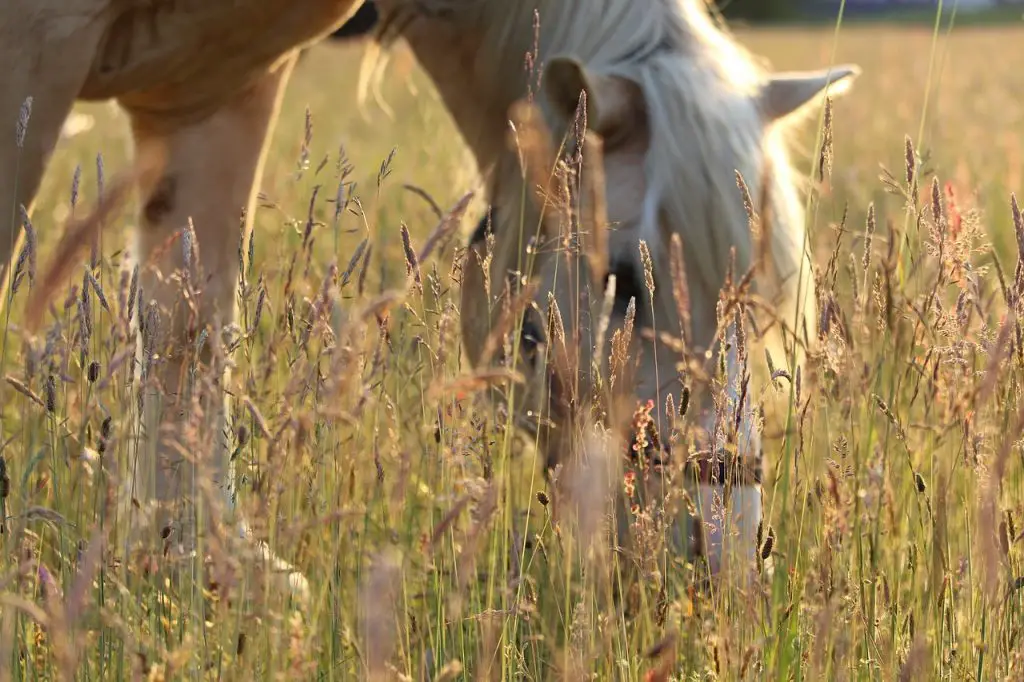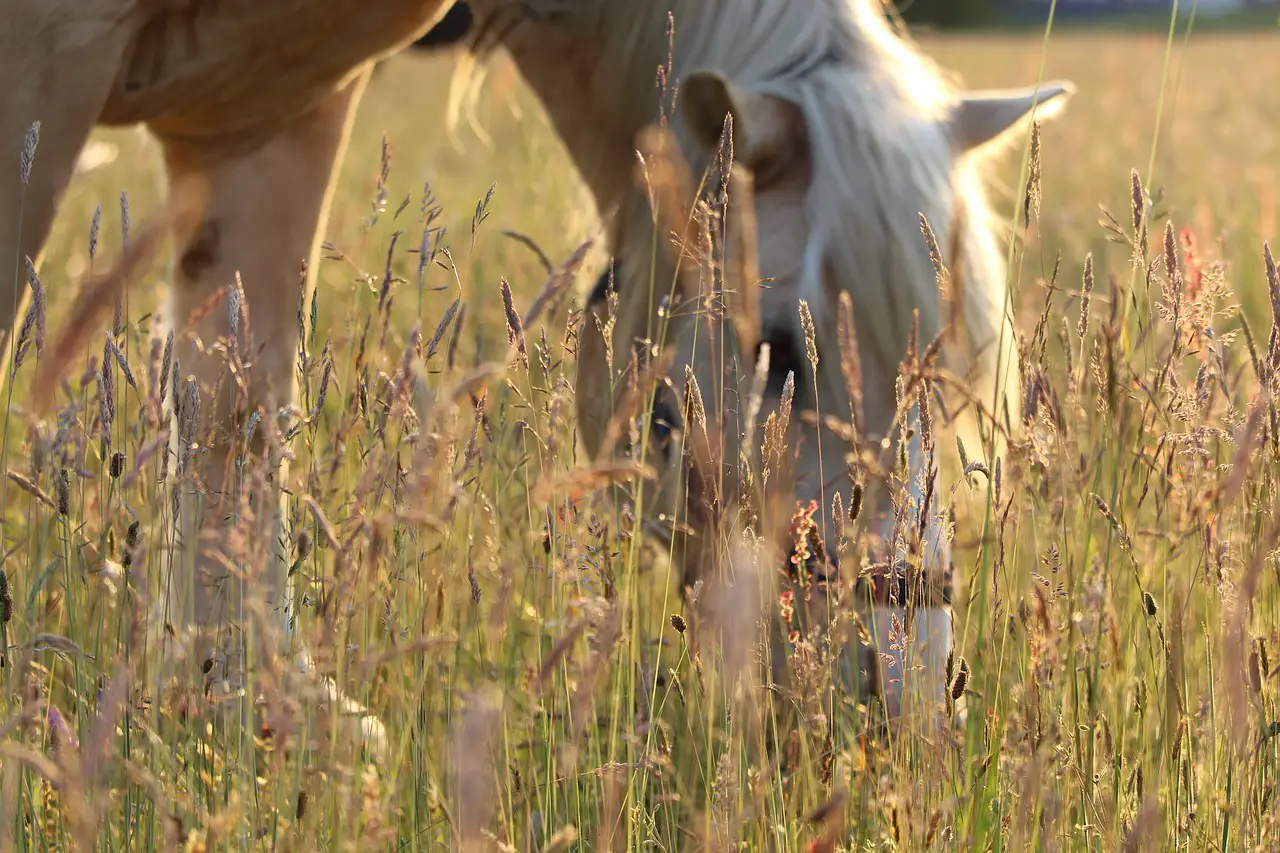Last Updated on April 5, 2022 by Allison Price
Researchers in New Zealand discovered that ryegrass staggers were caused by tiny fungi called Endophytes 25 years ago.
They discovered that the mycotoxins created by endophytes within ryegrass cells can affect livestock and cause them to tremble or lose coordination.
It was discovered that the toxins affected a part of the cerebellum responsible for muscle coordination.
1982’s breakthrough opened the door to the development of strategies for minimizing nerve and muscle disorder. This condition affects horses and sheep, cattle, alpacas and certain species of deer.
Low-endophyte grass varieties can be used to reduce animals’ exposure. Effective binding agents that trap the toxins have been developed in recent years. They allow animals with toxicity to expel them from their feces.
Symptoms of ryegrass staggers include:
- Trembling, unsteadiness and poor muscle co-ordination. In severe cases they will stagger and can fall over. Lack of control is often worst at the horse’s rear end.
- Erratic and anxious behaviour. The animal is spooked by events that normally wouldn’t provoke such a response.
- Animals with milder cases may display some trembling about the head and neck area, possibly involving the shoulder. Symptoms will worsen if exposure to the toxin increases.
Recent evidence suggests that horses are more affected by the toxins than previously thought.
Although severe cases are easier to diagnose due to the staggering and trembling, many owners believe that mycotoxins may have caused the horses’ behavioural problems.
At this point, evidence seems to be mostly anecdotal. Although not overwhelming, evidence is steadily building.
Horse owners who have moved their horses from a suspicious pasture or given them a regular dose with a mycotoxin binder report significant improvements in their horse’s behavior.Rotate horses in pasture to ensure they don’t eat too close the base of ryegrass.
There is a danger in blaming all aberrant behavior on mycotoxin poisoning.

A horse owner who notices unusual behavior, such as nervousness, or strange responses, should consult a veterinarian to rule out mycotoxin poisoning.
Horses are susceptible to mycotoxins in a wide range of ways, it is clear. Two horses could be grazing in the same pasture, and ingesting the same amount of mycotoxins. One horse might have severe staggers while the other does not show any obvious symptoms.
In the most serious cases, ryegrass staggers can be fatal. After the toxic feed source is removed, most horses will recover in one to two weeks. A mycotoxin binder can speed up recovery.
Many horses have sustained serious or even fatal injuries from poor coordination due to the toxins. Animals with this disorder can quickly lose their condition. Animals with this disorder will likely not be grazing as often as usual and not drink as much. The toxins are most active during dry and warm seasons. Endophytes tend to be concentrated at the base of the leaf sheath and in seed heads. Horses may ingest more mycotoxins when they are in a paddock that is not as clean.
Horses who are forced to graze on grass that isn’t yet grazed will eat mainly the base of the plant. This will likely lead to higher mycotoxins consumption.
Strategies to minimise the risk of ryegrass staggers
- Use low-endophyte or endophyte-free grasses when resowing pasture. The low-endophyte option is usually best, as endophyte-free grasses do not at this stage tend to compete well with other grass varieties. Local seed merchants should be able to recommend a suitable variety or mix.
- Rotate horses through pasture so they are not forced to eat too close to the base of ryegrass.
- If possible, rotate your horses in such a way that they graze their way through a paddock before ryegrass seedheads form. (The growth rate of grasses that have formed seedheads generally slow, so you’ll also be encouraging more grass growth).
- Horses vary widely in their tolerance to the toxins. If you have an annual problem with staggers in your herd, there is a good chance that one or two of your animals will show symptoms first. Watch these animals closely at times when you consider the risk is higher.
- The higher a horse’s feed intake, the more susceptible it will be to mycotoxin poisoning. Thus, the risk will be higher with horses that are still growing, those in work, mares in the later stages of pregnancy, and mares feeding foals.
- Watch for visible fungi such as toadstools and mushrooms. When these are growing well, the endophytes within ryegrass are also likely to be doing well.
In warmer months, ryegrass can develop seedheads that the horses will happily eat. This problem can persist well into the autumn.
Stress on plants can cause variations in toxin levels, according to studies. Dryer conditions can make the problem worse. Insect attack may lead to an increase in mycotoxin levels.
Dry summers are more likely to pose a risk.Staggering is more common in horses than in ruminant animals like cattle.
Neotyphodium lolii, which is a type of endophyte found in ryegrass, is the one known to cause staggers. Lolitrem is the toxin it produces. It’s named after Lolium, which is the scientific name of ryegrass, and trems to refer to the trembling it causes. It also releases peramine and ergovaline, two other potentially harmful mycotoxins.
Although a blood test can be done to determine the level of loliterm, vets will diagnose ryegrass stutters based on a horse’s behavior. They also consider the pasture and other evidence that could indicate high levels of mycotoxin.
The veterinarian may suggest that the horse be moved to another paddock with less or no ryegrass or one with low or non-endophyte grass varieties.
If the available paddocks for horses are not as good as the one they are currently grazing in, you can shut them down and give them hay, baleage and other supplements. Make sure there is plenty of clean, fresh water.
Did you know?
- It was New Zealand researchers who discovered the link between mycotoxin-producing endophytes and ryegrass staggers.
- The wide variation in horses’ sensitivity to mycotoxins provides a clear opportunity to breed mycotoxin-resistance into animals. However, breeders are much more focused on questions of bloodlines and conformation in making their breeding decisions. Mycotoxin resistance has successfully been bred into sheep.
- Horses, with their relatively simple digestive system, are more prone to staggers than ruminant animals such as cattle. This is because a ruminant animal’s digestive system partly ferments forage before digestion.
Because toxin can have a cumulative effect, it is important to reduce your toxin intake. Horses will experience worse symptoms if they have more toxin in their system.
Although animals should be closely monitored, don’t stress horses unnecessarily. If you are causing anxiety in your horse, don’t approach him unless you have specific tasks such as feeding, watering, or cleaning out his dung. Keep calm and quiet around horses and avoid any actions that could increase stress levels.
Mycotoxins do not only affect ryegrass.
Many other fungi can also live on or within edible plants and cause neurological problems similar to ryegrass staggers.
Scientists believe that there are approximately 300 mycotoxins which cause toxicity in animals and humans.
The presence of molds in conserved forage like hay and haylage will often be obvious. Although moulds are not visible, horse owners should be capable of detecting their presence by smelling the feed.
Horses won’t eat it unless they are very hungry. It should never be given food.
How mycotoxin binders work
Mycotoxin binders essentially have a mechanical action.
They bind with the mycotoxin, preventing their passage through the wall of the gut and into the bloodstream.
In the end, the mycotoxin and binding agent harmlessly pass through the horse, exiting in its droppings.
A number of agents have proved successful as mycotoxin binders.
One type has been developed from the cell walls of yeast.
Some clays that display suitable absorption properties have also been used successfully as binders.
There is no evidence that these binders have any toxic effects.
Mycotoxins are not likely to impact palability in grains. Mycotoxins from grains can quickly pass through horses’ intestinal walls and, in high enough amounts, can cause death.
Recent research into the effects mycotoxins have had on horses has been increasing. This is partly due to the recognition that they are serious and widespread.
Mycotoxins have been linked to a variety of horse-related issues, including neurological problems, hypersensitivity to stimuli, brain lesions, and wider neurological problems.
Some people suspect that prolonged exposure to low levels may lead to gradual damage to certain organs.
Although there have been significant advances in mycotoxins research and the problems they cause it has become clear that more research is required.



